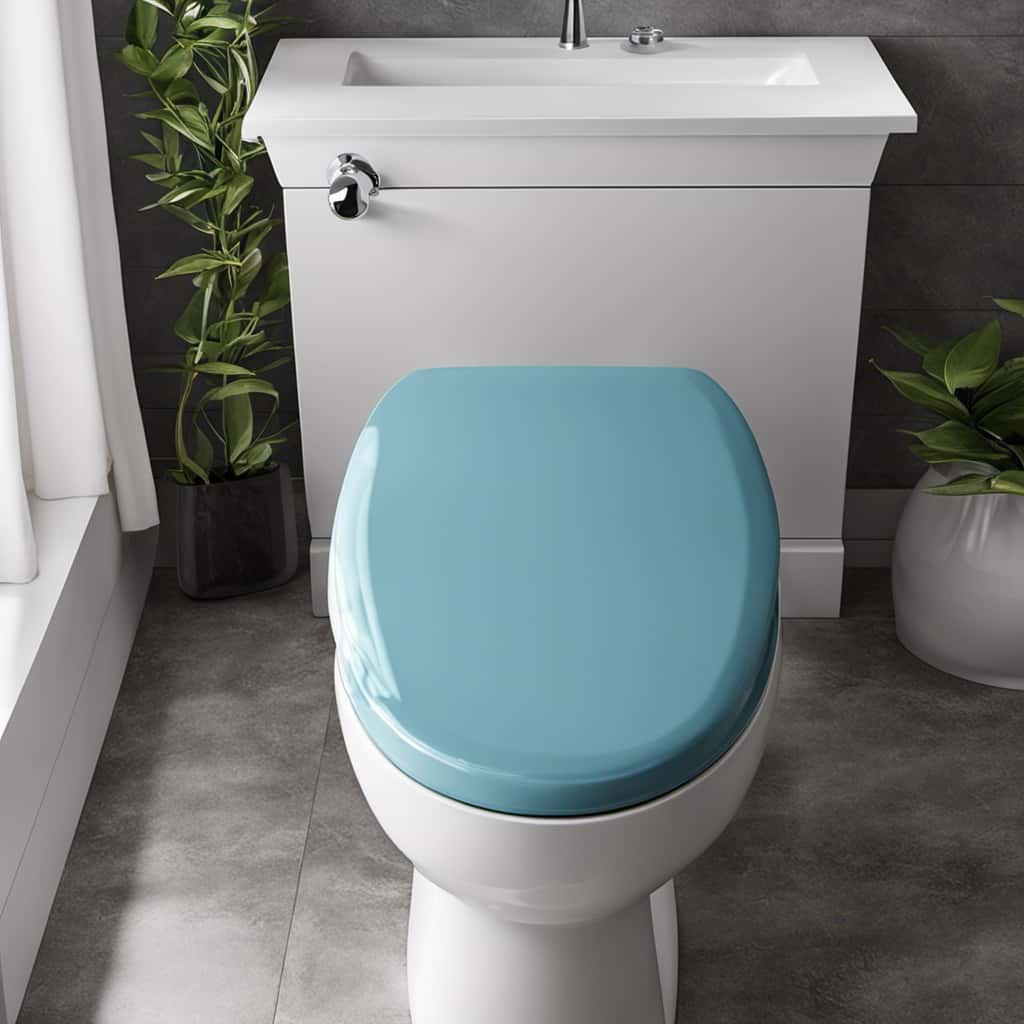In this article, we will demonstrate the simple process of flushing the toilet directly from the tank. It is essential to familiarize yourself with the components of the tank, turn off the water supply, and adjust the water level in order to effectively carry out this procedure.
By following our precise directions and troubleshooting common issues, you’ll be able to maintain a functional toilet system. Get ready to become a pro at efficiently flushing your toilet and keeping it in optimal working condition.
Let’s dive in!
Key Takeaways
- Locate the flush handle or button on the top of the tank.
- Press or pull the handle to activate the flushing mechanism.
- Hold down the handle until the tank is completely empty.
- Flushing from the tank removes waste and maintains hygiene.
Understanding the Tank Components
To understand the tank components, we’ll begin by examining the various parts that make up the flushing mechanism. The flushing mechanism is a crucial part of the toilet that ensures proper waste removal and water conservation.

The main components of the flushing mechanism include the flush valve, fill valve, and overflow tube. The flush valve is responsible for releasing water from the tank into the bowl, while the fill valve regulates the water level in the tank after each flush. The overflow tube prevents water from overflowing in case of a malfunction.
Understanding these components is essential for proper tank maintenance and to explore water-saving options. By maintaining and optimizing these components, you can ensure a well-functioning toilet while conserving water and reducing your environmental impact.
Shutting Off the Water Supply
To shut off the water supply, we’ll need to locate the shut-off valve. Here are the steps to follow:
- Identify the shut-off valve: Look for a small handle or lever located near the base of the toilet tank. It’s typically on the left side and may be labeled.
- Turn off the water: Rotate the handle or lever clockwise until it stops. This will shut off the water supply to the toilet.
- Verify the water is off: Flush the toilet to ensure that no water flows into the tank. If the tank doesn’t refill, then the water supply has been successfully shut off.
By shutting off the water supply, you can prevent water from entering the tank and allow for tasks like water pressure regulation or alternative flushing methods.

Now that the water is off, let’s move on to flushing the toilet from the tank.
Flushing the Toilet From the Tank
After shutting off the water supply, we can now proceed to flush the toilet from the tank.
Flushing the toilet from the tank is an important part of tank maintenance and can also contribute to water conservation efforts.
To flush the toilet from the tank, locate the flush handle or button on the top of the tank. Give it a firm press or pull to activate the flushing mechanism. This will release the water stored in the tank and initiate the flushing process.

Ensure that you hold down the handle or button until the tank is completely empty and the water stops flowing into the bowl. Flushing the toilet from the tank helps remove waste and maintain proper hygiene.
Now, let’s move on to adjusting the water level in the tank for optimal flushing efficiency.
Adjusting the Water Level
Once the water supply has been shut off, we can proceed to adjust the water level in the tank. Proper water level optimization is essential for achieving energy efficient flushing. Here are three steps to adjust the water level effectively:
- Locate the water level adjustment screw or valve: Look for a small screw or valve on top of the fill valve assembly. This is usually found on the left-hand side of the tank.
- Adjust the water level: Use a flathead screwdriver or simply turn the adjustment valve clockwise or counterclockwise to raise or lower the water level. Aim for a level that’s about an inch below the top of the overflow pipe.
- Test and make necessary adjustments: Flush the toilet and observe the water level. If it’s too low or too high, repeat the adjustment process until the desired water level is achieved.
By following these steps, you can optimize the water level in your toilet tank for energy efficient flushing.

Now, let’s move on to troubleshooting common issues…
Troubleshooting Common Issues
Troubleshooting Common Issues
Now, let’s delve into the troubleshooting of common issues that may arise with the toilet tank, ensuring efficient functionality.
One common issue is a toilet handle malfunction, which can prevent the flushing mechanism from operating correctly. If the handle feels loose or unresponsive, it may need to be tightened or replaced.
Another common problem is fill valve problems. The fill valve controls the water level in the tank and can cause issues if it isn’t functioning properly. If you notice that the tank isn’t filling up adequately or if there are strange noises coming from the fill valve, it may be necessary to clean or replace it.

Frequently Asked Questions
How Often Should I Flush the Toilet From the Tank?
We flush the toilet from the tank as often as necessary to maintain proper function. Flushing from the tank conserves water and ensures efficient operation. Regular maintenance is key for optimal performance and water conservation.
Can I Flush the Toilet From the Tank if the Water Supply Is Shut Off?
Yes, you can flush the toilet from the tank even if the water supply is shut off. To do this, you can use alternative flushing methods such as pouring water directly into the bowl.
Can I Adjust the Water Level in the Tank to Conserve Water?
To conserve water, we can adjust the water level in the tank. Troubleshooting common toilet tank issues often involves adjusting water pressure. It is important to understand how to do this to promote water efficiency.
Is It Possible to Flush the Toilet From the Tank if There Is a Clog in the Bowl?
Yes, it is possible to flush the toilet from the tank if there is a clog in the bowl. Troubleshooting clogs and exploring all flushing options can help resolve the issue effectively.

What Should I Do if the Toilet Tank Continuously Fills With Water After Flushing?
When the toilet tank continuously fills with water after flushing, troubleshooting common toilet tank issues is essential. Steps to fix a running toilet tank include checking the flapper, adjusting the water level, and inspecting the fill valve.
Conclusion
In conclusion, properly flushing the toilet from the tank is a simple yet essential task for maintaining a functional bathroom. By understanding the tank components, shutting off the water supply, and adjusting the water level, you can ensure a smooth and efficient flush every time.
Remember to troubleshoot common issues to avoid any potential problems. Keep your bathroom clean and hygienic with a well-executed tank flush.










